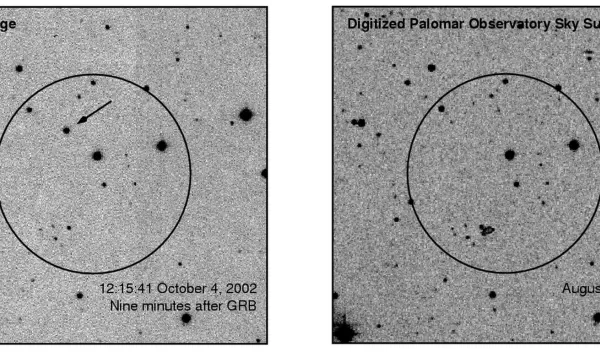
Wireless Network Helps Astronomers Observe Elusive Gamma-Ray Bursts
A gamma-ray burst (GRB) is one of the universe's most mysterious and explosive events. To understand exactly what GRBs are and why they occur, astronomers need to act fast. The High Performance Wireless Research and Education Network (HPWREN) has given researchers at Caltech's Palomar Observatory the speed they need to pinpoint the location of GRBs and observe them as they explode.
GRBs are briefly bright enough to be visible billions of light years away, but there are complications. First, the bursts are short-lived and appear at unpredictable locations and times. Furthermore, gamma rays don't penetrate the Earth's atmosphere, so GRBs must first be detected by a satellite. On top of that, the satellite only narrows down the location to a region of the sky about twice the diameter of the full moon.
HPWREN's wireless link, which has boosted the observatory's network bandwidth by a factor of 28, allows remote astronomers to rapidly point Palomar's automated telescopes and their high-performance digital cameras and catch GRBs and other elusive events in the act. HPWREN is an NSF-supported project of the University of California, San Diego.
In October 2002, for example, GRB021004 was detected by the HETE GRB-hunting satellite. Within seconds, the satellite sent an email to interested observers, including postdoctoral researcher Derek Fox at Caltech. Using the HPWREN microwave link, Fox seized control of the observatory's wide-field 48-inch Samuel Oschin Telescope and captured an image just nine minutes after the burst began.
The HPWREN link also allowed Fox to rapidly transfer the image back to Caltech. A single image from the NASA-funded Near-Earth Asteroid Tracking camera that Fox used has nearly 50 million pixels and weighs in at 100 megabytes. (Palomar’s newer QUEST camera boasts 170-million pixels per image.)
Analyzing the image, Fox pinned down the exact location of the GRB, which he announced to astronomers worldwide only three hours after the burst occurred. This enabled the details of the GRB's fading afterglow to be observed around the world with unprecedented precision.
The study of GRB021004 and other gamma-ray bursts observed at Palomar are starting to provide a picture of what may be their cause: explosions of massive stars during the creation of black holes in galaxies far away -- a particularly energetic type of supernova.
Thanks to HPWREN, Palomar Observatory has joined the ranks of modern, rapid-response facilities that are providing astronomers with their first glimpses into the exciting but challenging territory of very faint moving and transient objects.
-- David Hart
